At Double Nickel Campground in Waco, Nebraska, Jeff and Amanda have established a thorough strategy to natural disaster prevention. Over the previous 11 years, they have experienced various severe storms, including tornadoes, and have consistently developed their procedures to assure the safety of their guests and the durability of their campground. In this insightful conversation, they offer their views and experiences to assist other park owners in better preparing for similar circumstances.
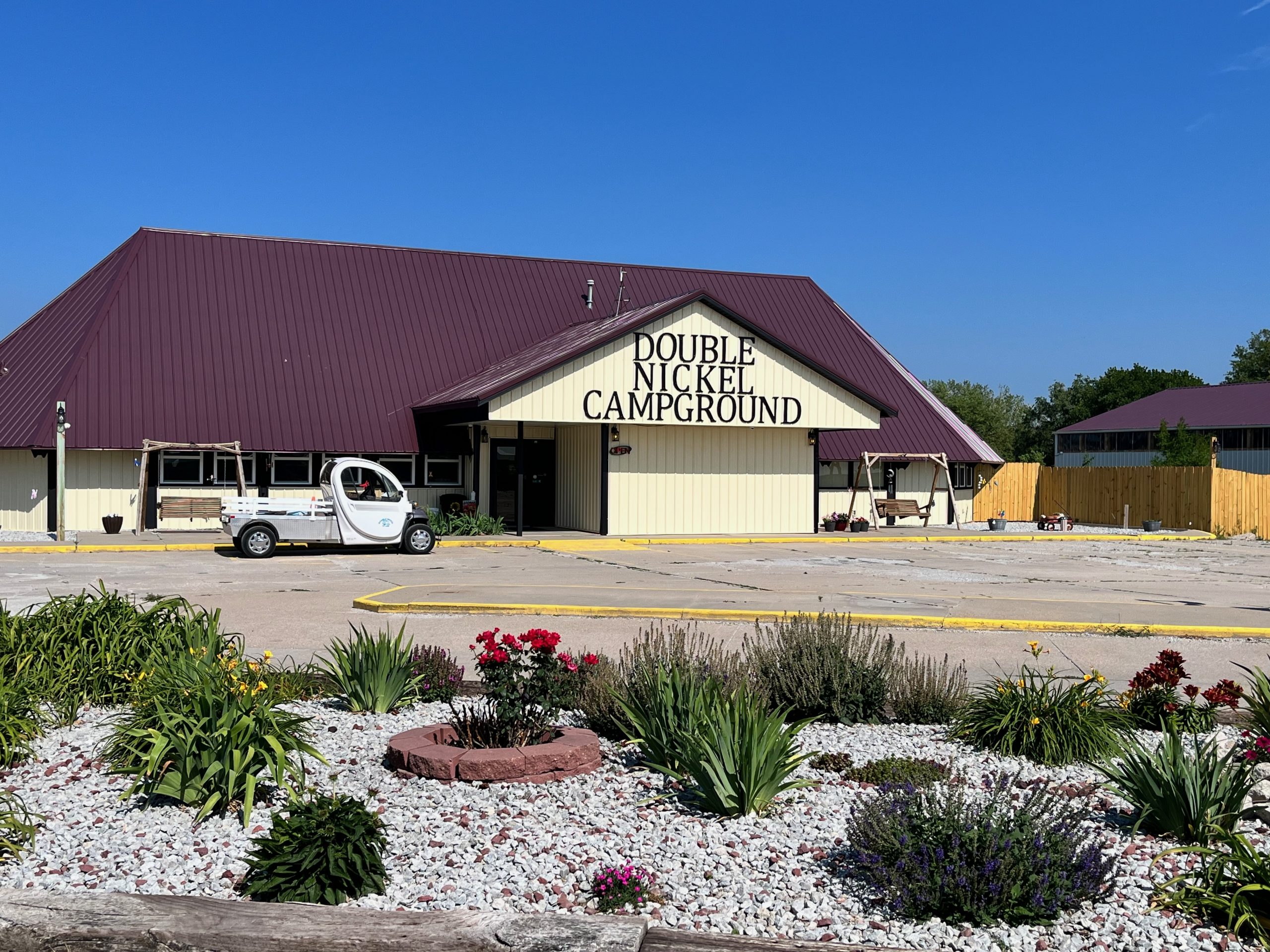
Despite keeping an eye on weather apps and forecasts, Jeff and Amanda were taken aback one July evening when a storm abruptly shifted course and made landfall at their campground without much notice. In less than half an hour, intense downpour and hailstorm inflicted a great deal of damage: a 150-foot-tall carport, two overturned campsites, one that was flipped 90 degrees, unsecured park equipment scattered, and naturally, tensions were high.
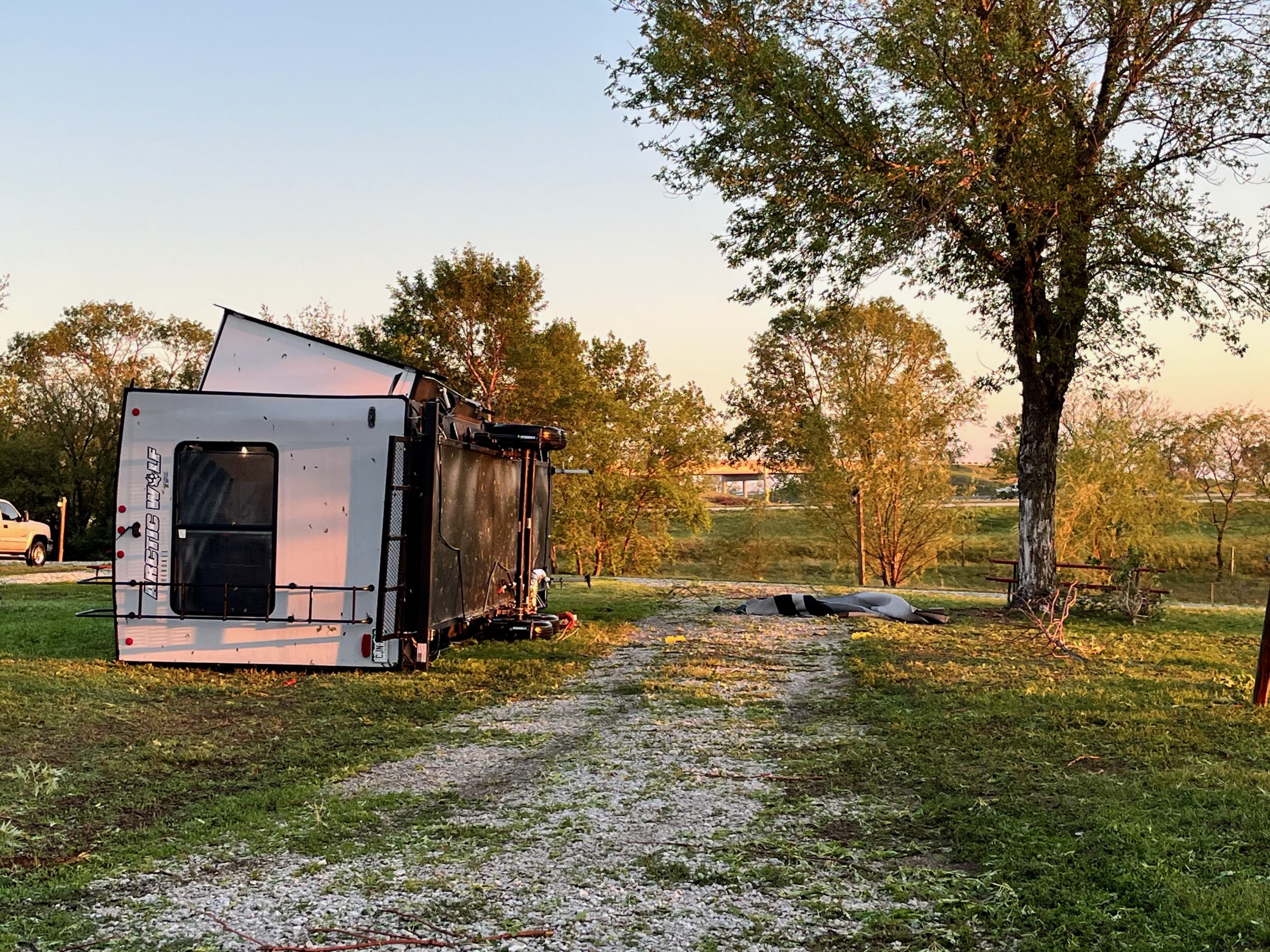
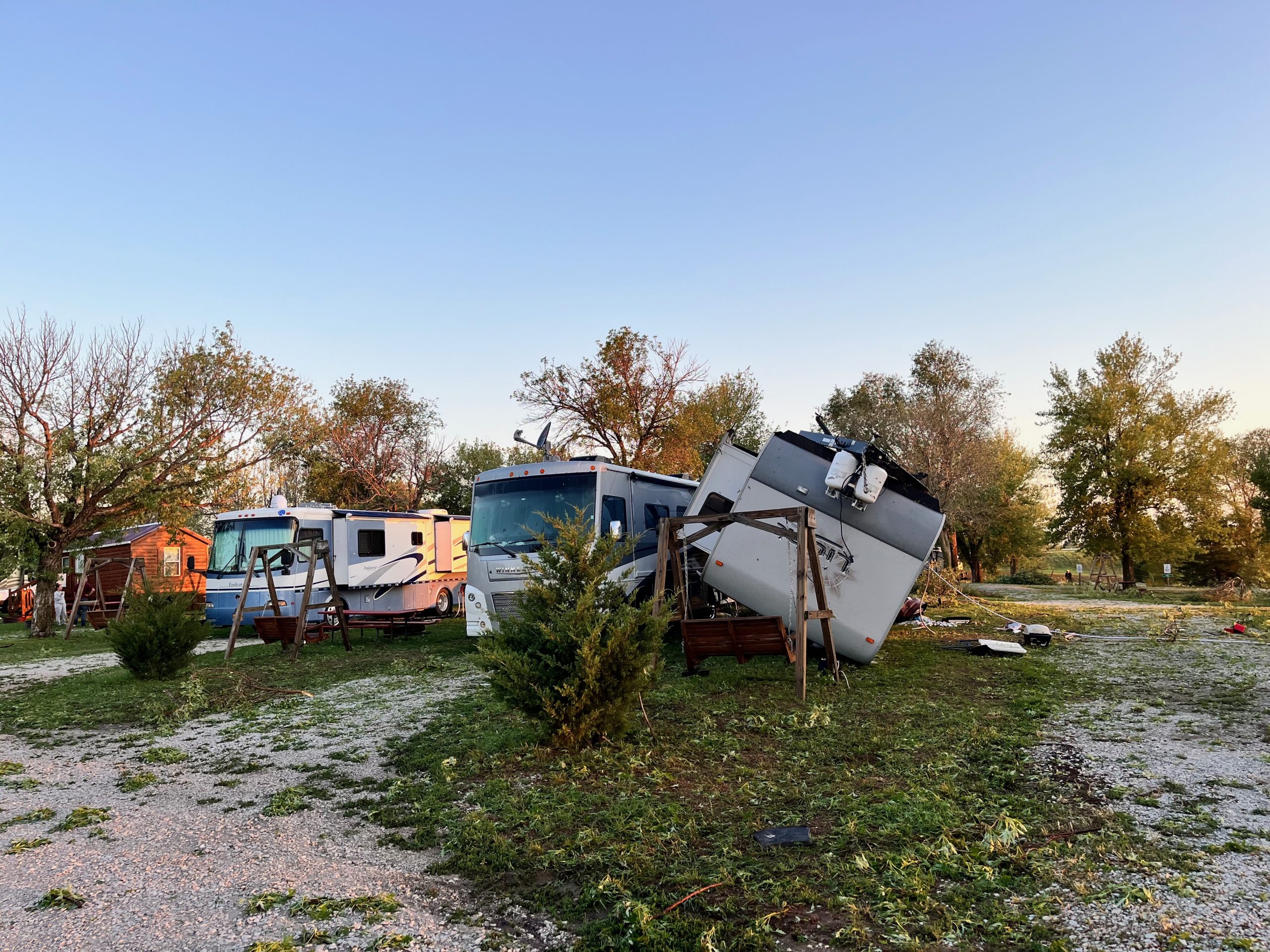
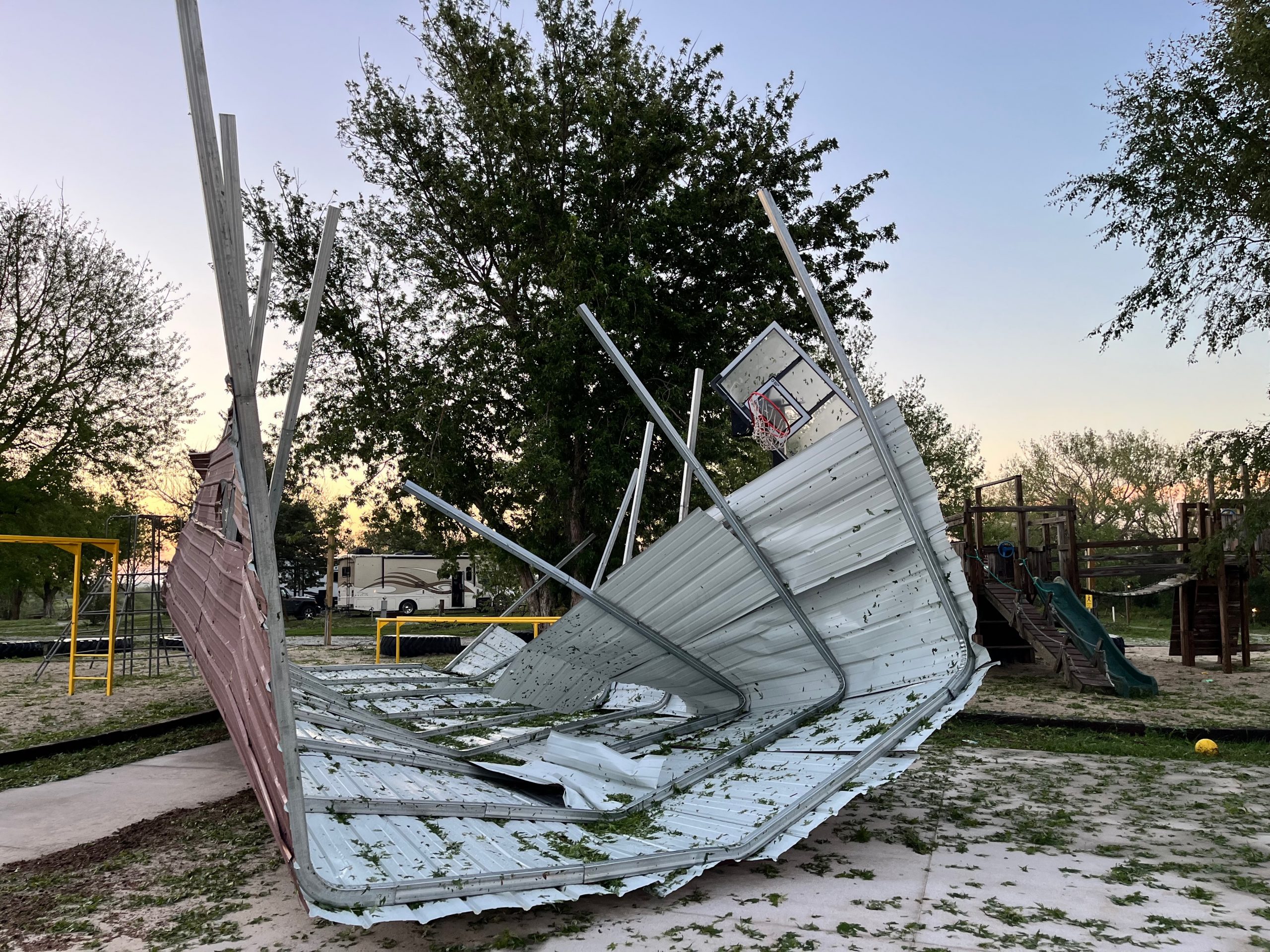
They used their texting system to notify campers during the storm, and they kept an eye on things via their network of cameras. After the storm, they got busy mobilizing: Amanda checked on campers and helped those trapped in flipped campers, while Jeff used a bobcat to clear routes for emergency personnel. Their quick response and the help from other campers ensured everyone’s safety until emergency services arrived.
Jeff and Amanda stress how their current protocols for being prepared evolved over time. They did not have the sophisticated technologies they do now at first. They are well-prepared because they extensively plan and communicate. Here are some of the strategies they currently implement that may help your outdoor hospitality business evolve over time:
An Easy Communication System
They use their reservation system’s SMS feature to alert campers to the possibility of severe weather both before and during their stay. When a tornado warning is issued all the lights in the park turn red and tornado sirens (total of 3) go off for six minutes.
Storm Shelter Orientation
They escort guests to their campsites upon check-in and indicate the storm shelter so that visitors are aware of its existence.
Clustering Guests
When there are warnings of bad weather on the weekends, they group campers who have mobility limitations together and arrange everyone in a row for a quick departure.
Infrastructure Investments
They have put in place vast electrical and communications networks with surge protection as well as battery backups for lighting and cameras throughout the years. This guarantees ongoing observation and prompt evaluation of the harm.
Safe Structures
For their own protection, they have constructed a reinforced apartment inside their store, and in the event that they are unable to reach the storm shelter, they can still keep an eye on the park from there.

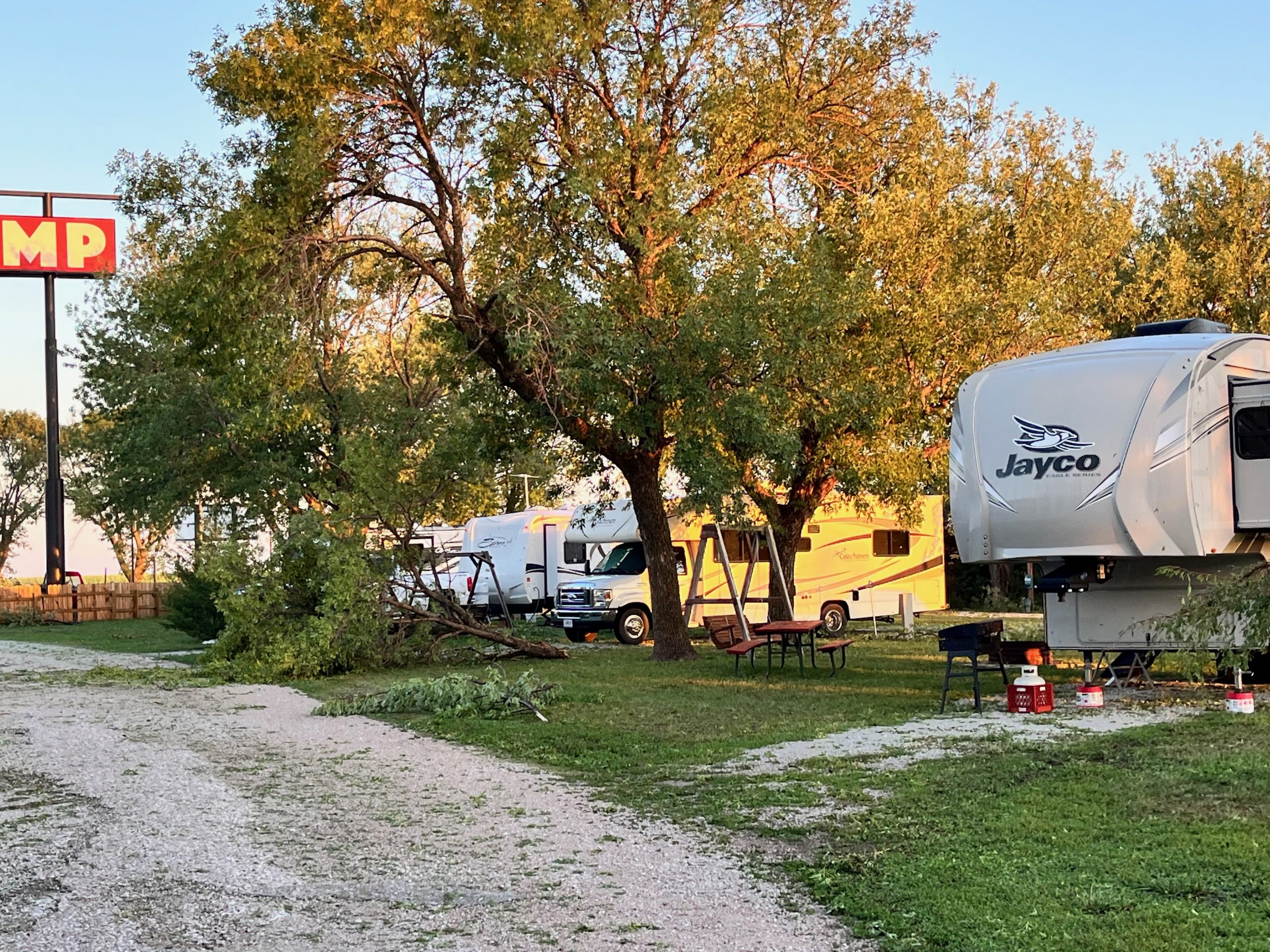
Starting with what you have, and expressing this to your guests clearly, you can build an effective plan that uses any reinforced structure—like a bathhouse—as a safe location. This is practical advice for other park owners. You don’t need sophisticated equipment to maintain guest safety. Keep a composed and comforting manner; your guests will pick up on this and you will be the reassuring presence they need in an emergency. It’s crucial to communicate clearly with your guests. Let them know about your emergency plan, expectations for what they should do, and the kind of support they can count on from you. Even if it might not pay off as quickly as other amenities, safety is an investment that is absolutely necessary. Storm shelters and dependable communication systems are essential features. Finally, take what you’ve learned from each storm and use it to improve your infrastructure and procedures going forward.
And marketing a park as a safe place without scaring potential guests requires a delicate balance. Jeff and Amanda recommend mentioning safety features on your website and highlighting positive reviews from guests who felt secure during storms. This is reassuring without emphasizing the potential for negative experiences.
Planning, communicating, and investing are all necessary components of the continuous process of being prepared for natural disasters. Jeff and Amanda provide insightful advice to other park owners who wish to improve their preparedness by sharing their experiences. To safeguard your visitors and property you must learn from every experience. No matter what the elements throw at us, working together, we can make sure that our parks continue to be welcome, safe spaces for all visitors.
Bonus! Check out the severe weather action plan they distribute to their guests upon arrival here.


